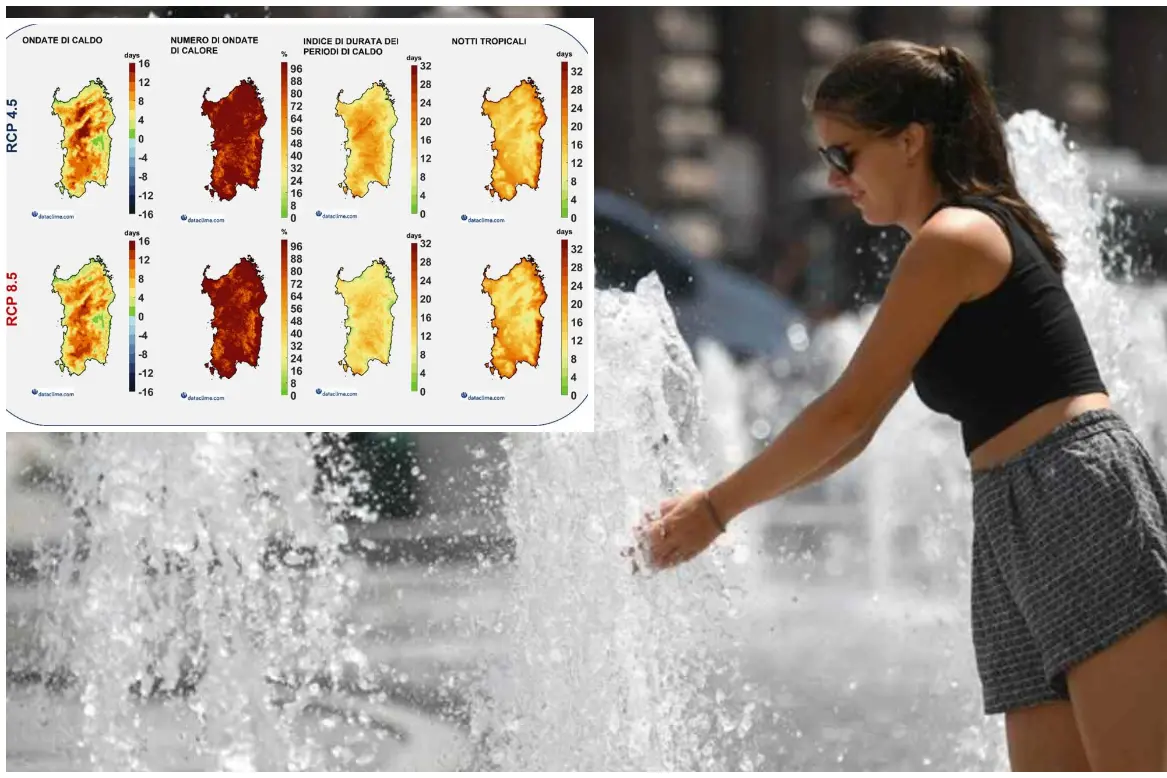Sardinia, the climate of the future: temperatures up 1.5 degrees and heat waves increasing by 106%
Weather scenarios on the Island in the projections developed for the Region by the CMCC Foundation. Also a surge in “tropical nights”Per restare aggiornato entra nel nostro canale Whatsapp
In the next few years , average temperatures in Sardinia will increase by 1.5 degrees , while heat waves on the island will record an increase of as much as 105% or even 106% depending on the scenario, with a surge in the number of "tropical nights", that is, nights in which the minimum temperature does not fall below 20°C.
This is what we read in the "Climate framework for the reference period and expected climate projections for Sardinia" prepared for the Region by the Regional Models and Geo-hydrological Impacts Division of the CMCC Foundation - Euro-Mediterranean Center on Climate Change , within the Regional Strategy for Adaptation to Climate Change.
The dossier analyses the climate of the Island from different points of view, examining the status of past years, the present situation and trying to elaborate future scenarios.
A document – very technical – which tries to predict the main changes – and the related dangers – that will affect the Island between now and 2050.
Two hypotheses were taken into consideration:
- The first (called Scenario RCP4.5 and which we could define as “optimistic” ) starts from the assumption that effective actions will be undertaken to significantly reduce greenhouse gas emissions .
- The second ( RCP8.5 scenario , which we could define as “pessimistic”) imagines that, on the contrary, such significant actions are not adequately undertaken or that they are in any case “irrelevant” and that therefore by 2100 atmospheric concentrations of CO2 will have tripled or even quadrupled compared to pre-industrial levels.
In both the first and second scenarios, the report states, in Sardinia "an increase in average temperature indicators and extremes is generally expected" , but "the increases are more marked in the hypothesis of the RCP8.5 scenario than in the RCP4.5 scenario".
In detail, «a spatially uniform increase in mean temperature of 1.3° C and 1.5° C is expected for the RCP4.5 and RCP8.5 scenarios respectively». Again: «Similar trends are expected for the maximum and minimum temperature extremes» with average increases between 1.4 and 1.6° C, again depending on the scenario considered.
«As regards the variations in the number of days/occurrences of indicators related to maximum and minimum temperatures, an increase in the number of heat waves is expected, ranging from a minimum of 7 days to a maximum of 86 days» depending on the scenario.
Again, always trying to predict the climate of the next decades, "a percentage increase in the number of heat wave events of 105% is projected" for the "optimistic" scenario and 106% for the "pessimistic" scenario , with significant spatial variability".
Having made the necessary calculations, analyzed the data, models and variables of the case, the experts finally arrive at the following conclusions on the future climate in Sardinia: «The analyses highlight a general increase in the average temperature and, over a large part of the region, in the extremes of maximum and minimum temperatures, periods with high temperatures, the frequency of extremely hot events and tropical nights».
PRECIPITATION – «At the same time, – continues the report in the “Conclusions” paragraph – in terms of precipitation, the RCP4.5 scenario returns a reduction in cumulative annual precipitation in the north and an increase in the south, while the RCP8.5 scenario shows a general increase in annual precipitation across the entire region , with the exception of a slight reduction in some areas located in the north-eastern and southern part of Sardinia».
"For both scenarios considered, an increase in maximum 1-day rainfall values and precipitation extremes is expected over a large part of the study area. In terms of the number of consecutive days per year with precipitation less than 1 millimeter, the projection with the RCP4.5 scenario shows an increase in annual values over the northern part of the region and a reduction in much of the center and south . On the other hand - the report concludes -, the projection with the RCP8.5 scenario shows a generalized increase over the entire region".
